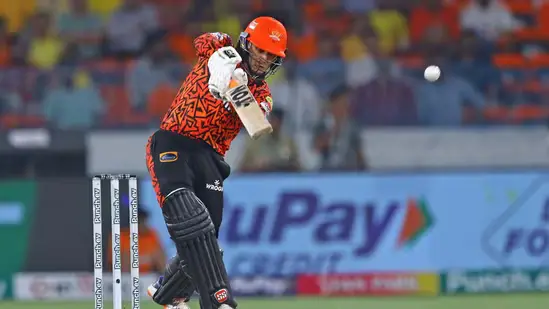Estelle Vasudevan
The Impact Player rule at the IPL has fans, players and experts divided. For purists, the game becoming basically a 12 v 12 contest is an absolute no-no, but innovation is usually met with opposition before it takes.
When the Impact Player rule was introduced in 2023, nobody quite knew what to expect. Come 2024 though, and teams are beginning to come to terms with the numerous possibilities of combinations the rule opens up. Last season, you’d very often see your next best batter or bowlers lined up as the impact sub, used almost out of obligation rather than necessity. A straight swap, usually between innings. But that’s not the case this season. It’s clear that some real thought has gone into how players are going to be used tactically, and this has certainly had an impact, especially on the batting front.
The 2024 season is the fastest scoring IPL, by a distance. This year, teams went at an average RPO of 9.61 in the league phase. Looking back across the last three seasons, that figure has gone from 8.06 in 2021 to 8.52 in 2022 and 8.97 last season. While you could say that the game is changing and moving into an even faster-scoring phase with better use of batting resources and more aggressive batting, this same growth in run-rates is not really reflected in the international game. There’s no doubt that the option of having a pure batter at No. 8 has changed the mindset of batters up the order.
Take a look at the line-ups for Kolkata Knight Riders and Sunrisers Hyderabad, the two fastest scoring sides of the season, who topped the league table and have reached the final. Between them, they have the four biggest totals – SRH have three of those. For both teams, the top orders have gone hard and been relentless in terms of intent, knowing they have long batting line-ups with the likes of Pat Cummins and Mitchell Starc at No.9. Sunil Narine, Phil Salt, Travis Head and Abhishek Sharma are already intent merchants, but this just allows them to be even more fearless in the way they go about things at the top of the order.

It also allows teams to give their opening or top order batters the license to treat their batting as their one and only responsibility to focus on in a game. Both Abhishek and Head have been used just like that by SRH, having a good rest during the bowling innings, only to come in and blast off with the bat. Injuries can be dealt with in the same way – remember how Jos Buttler, struggling with an injury that had kept him out of a Rajasthan Royals game, smashed 109 off 56 to help RR chase 224 after coming in as an Impact Sub in the next match? It’s taken a batting friendly game and pushed it even further towards the batters.
The most discussed aspect of the Impact Player rule is the diminishing role of the allrounder. And it’s a fair point. Players who do have a lesser second skill have no real incentive to build on it because this rule means more opportunities for specialists. This could have a massive impact on Indian cricket, especially when it comes to competing in internationals, where the Impact Player rule does not exist (yet?). Good allrounders are already rare, but where is the next Hardik Pandya going to come from if guys who have the potential to be a utility player like him, don’t get the exposure for one of their skills in the IPL? We are already seeing it affect the fringe players in the Indian setup. Shivam Dube, Washington Sundar, Riyan Parag and even Abhishek Sharma’s all-round skill haven’t been showcased as much in this year’s IPL because their teams simply haven’t needed it.
On the flipside, this means that there is less room for half-baked players. If you’re a bowler, you’re going to have to contend with coming up against 8-9 batters who can take you for runs. Similarly, as a batter, you won’t see too many part-time options who you can target. In an environment like that, players that don’t keep up skills wise, will fall behind.

While there’s been a lot of commentary on the negatives of the rule, you do also have a couple of positives. Perhaps the most telling is that it has meant that more players, especially Indian players, have gotten an opportunity to play – whereas they may have been on the bench for the duration of a season previously. One such example is Dhruv Jurel in 2023 – he made only 152 runs all season, but the manner in which he went about things put him on the Indian cricket radar, and he eventually debuted for India too. Similarly, we’ve seen a number of young players like Abhishek Porel, Suyash Sharma and Ashutosh Sharma getting extended opportunities this season, which might not have happened if not for the Impact Player rule. In 2024, 214 players were used in the league phase, while before the Impact Player rule came in, 190 players were used across the 2022 season.
Many players have offered up their opinions on the rule, with most including Virat Kohli and Rohit Sharma not being in favour of it. While BCCI president Jay Shah has said that there is always the option of doing away with it altogether, much will depend on public opinion. The game has been veering towards more run-scoring in recent years and if the Impact Player rule speeds that up further, it’s possible that it could be here to stay.




